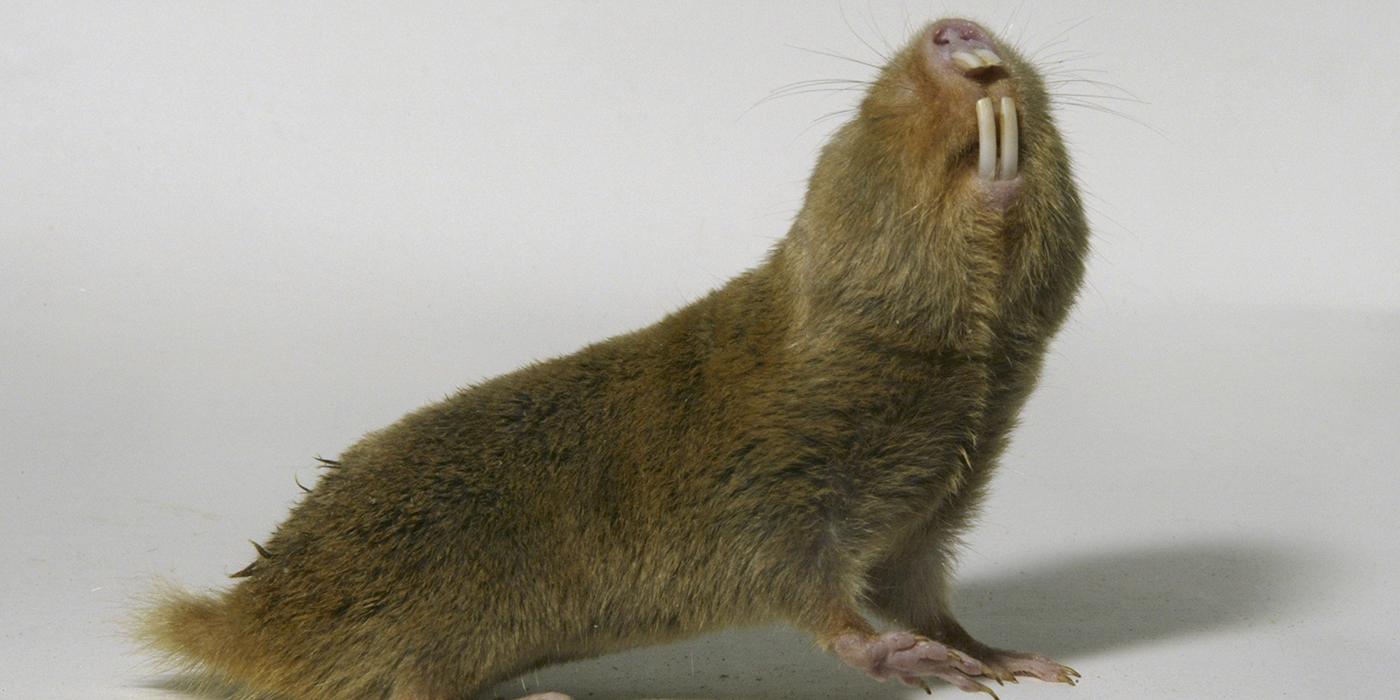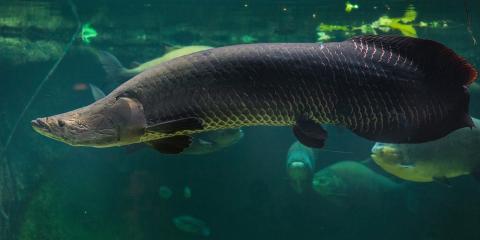Physical Description
Coloration varies—this species can be whitish, yellowish, clay, fawn, grayish, brown, reddish brown, cinnamon buff, and blackish. There may or may not be a white spot on the head. The fur is thick and often velvety.
Size
Damaraland mole rats measure 4 to 8.5 inches (10 to 21 centimeters) from their head to their rump. Their tails are 0.5 inches to 1 inch (1 to 3 centimeters) long
Native Habitat
Damaraland mole rats are found from western Zambia to northwestern South Africa.
They occupy a wide variety of soils in woodlands, savannahs and secondary forests. How deep they dig their tunnels depends on soil consistency: the looser the soil, the deeper the burrow. In seasonally flooded areas, they build an extensive mound to keep living chambers and food stores above the high-water mark. Even in other areas, the main living and storage rooms are located in higher ground, and from there tunnels extend in several directions. In one chamber is a large, communal nest made of vegetation and used for sleeping.
They push ground from the main tunnel with the hind feet and tail up a side tunnel, until the earth comes up in a cone and topples over to form a mound. Most burrowing activity occurs during the wet season, when mole rats extend new tunnels to feeding areas and carry back food for storage. In the dry season, they don't make new mounds, but redistribute soil in old, unused tunnels.
Lifespan
Damaraland mole rats can live for more than 15 years in human care.
Communication
Their eyes and external ears are very small, but their corneas are sensitive to air currents. Damaraland mole rats are remarkably attuned to sounds and vibrations.
Food/Eating Habits
Their diet consists mainly of roots, bulbs, tubers, and aloe leaves. Invertebrates, such as earthworms, larvae and white ants, are occasionally eaten.
Like naked mole rats (and unlike solitary mole rats of Africa), Damaraland mole rats live in areas so dry that years can pass without rain. Finding food (plants with huge underground roots) is difficult in any circumstances because the plants' distribution is erratic. Extending mole rat burrows to find more underground food is all but impossible during droughts because of soil conditions. When the rains come, the mole rats cooperate and dig furiously.
At the Smithsonian's National Zoo, they eat fed tubers, sweet potatoes, turnips, carrots, kale and leaf eater biscuits.
Sleep Habits
Damaraland mole rats are active throughout the day and night; activity alternates with about five major rest periods during a 24-hour period. They mole rats rarely leave their burrows, though they may sometimes go above ground to gather nesting materials and dig up seeds.
Social Structure
Damaraland mole rats live in colonies of up to 25 individuals who share a sleeping nest and burrow system. These groups are thought to be extended families comprising several generations. There is some division of labor in the colony. Reproduction is limited to the largest female and to one or two large males. The smaller animals do most of the work. Individuals from the same system live peacefully together but are extremely aggressive toward individuals originating in other colonies. They can bite savagely.
Together, they are more likely than a solitary mole rat to find a quantity of tubers to sustain the colony until the next rain. Alone, individuals would starve in this dangerous environment. With a "super mom" to produce more helpers, individuals give up personal reproduction for survival and indirect reproduction. By comparison, soil where solitary mole rats live is easier to dig through year-round and food plants are more evenly distributed, but not as big or concentrated enough to feed large colonies.
Reproduction and Development
These mole rats exhibit co-operative breeding, where some individuals forgo reproduction to help others breed. Although this type of reproduction is most common among insects like honeybees, two species of African mole rat (naked and Damaraland mole rats) display this behavior as well. Originally, its occurrence in mole rats was thought to stem from inbreeding. However, scientists used genetic markers to show that Damaraland mole rats are not inbred.
Gestation lasts 78 to 92 days and the average litter size is three young. Females usually have no more than two litters per year. The young are born highly developed, wandering out of the nest after 24 hours and being fully weaned by three weeks.
Conservation Efforts
There are no major threats to Damaraland mole rats. They often raid the tuber crops of native people and become pests in vegetable and flower gardens by destroying bulbs. These animals are sometimes hunted for use as human food.
Help this Species
- Share the story of this animal with others. Simply raising awareness about this species can contribute to its overall protection.



